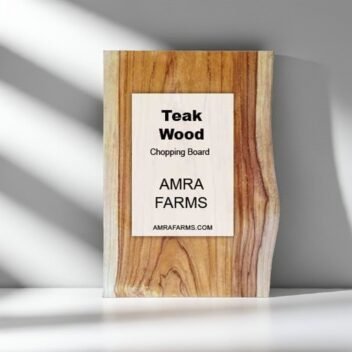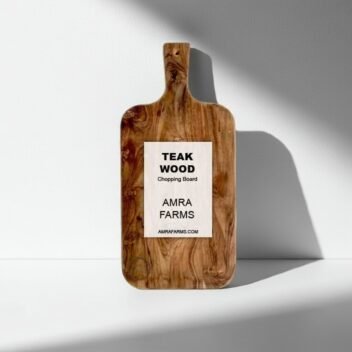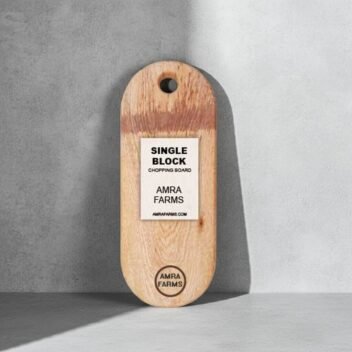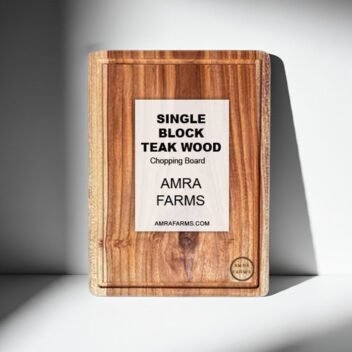Your cart is currently empty!
Health Benefits of Using a Teak Wood Chopping Board
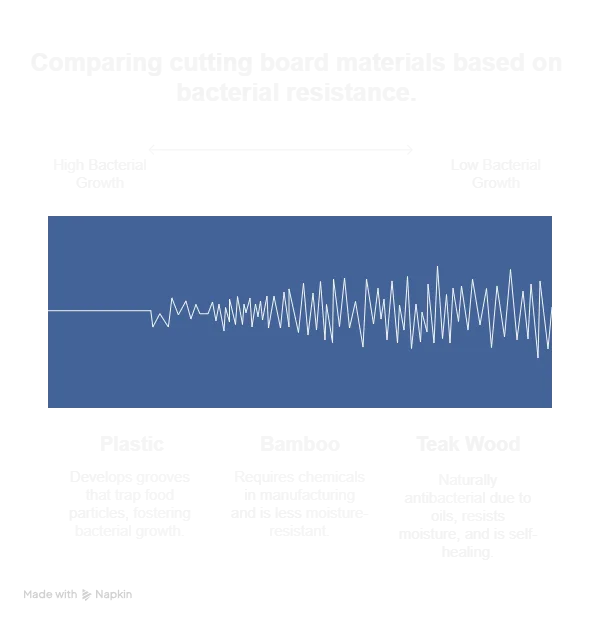
When purchasing a chopping board, we consider material, size, aesthetics and a lot more but forget to consider food safety in most cases. While we obsess on ingredients, cookware and hygiene, we overlook the benefits and drawbacks of a cutting board on our health. The unassuming slab you cut your vegetables on plays a major role in maintaining a safe surface to cut on, preventing foodborne illness. Whether it’s cutting vegetables for salad or preparing raw meat, the surface matters more than you think. Materials can harbour bacteria, dull your knives and leach harmful chemicals into your food. Choosing a cutting board should have a broader perspective and not just be a matter of convenience.
Consider some of the few materials:
- Plastic chopping boards: Cheap, dishwasher safe but develops deep knife grooves which will harbour bacteria
- Bamboo chopping boards: Eco-friendly but treated with chemicals and adhesives
- Wooden cutting board: Natural, safe, no chemicals, durable and hygienic, especially if crafted from a single block.
It is clear that wood stands out among all the materials. The natural oils usually provide an antibacterial quality to wood. The material is knife-friendly and it’s also a stylish choice.
This article explains the benefits of wooden cutting boards on your health in detail.
Teak Wood Chopping Boards with Natural Antibacterial Properties
Teak wood stands out among other materials for its natural antibacterial properties. The genuine health benefit of teak wood is backed by science and real-world use.
How teak’s natural oils inhibit bacteria growth
Teak is rich in natural oils and resins that act as a built-in self-defence mechanism. The oil is mildly hydrophobic and creates a moisture-resistant surface. The key contributor to the bacteria is humidity and the survival of bacteria depends on the material’s ability to hold and retain water. Teak wood’s natural oil prevents water absorption. Unlike plastic and soft wood, teak is hard, tightly grained, dense which prevents water penetration, keeping harmful microbes on the surface where they can be easily washed away.
Comparison with plastic and bamboo cutting boards
Plastic boards are dishwasher safe but develop deep knife grooves over time. These grooves trap food particles which decay and cause bacterial growth. If you don’t clean your boards thoroughly, they become a hotspot for bacterial growth very fast.
Bamboo cutting boards are eco-friendly but the process of manufacturing bamboo boards involves glues, chemicals making it less eco-friendly than you would want to believe. They are less resistant to moisture compared to wood and require more maintenance than regular wooden chopping boards. The hardness is good but that is also a drawback for professional chefs with expensive knives as they dull knives fast. Bamboo is also not self-healing, creating space for food to lodge and bacterial growth.
Teak wood boards, in contrast, are resistant to knife marks and are self-healing. They naturally resist moisture and are far superior when it comes to hygiene.
Scientific studies on wooden boards and microbial activity
Multiple studies including one from the University of Wisconsin show that wooden surfaces kill bacteria within hours without the need of disinfectants. Plastic, on the other hand, gives the bacteria an opportunity to grow and thrive when left alone. Teak, particularly with its natural oil, has been known to kill bacteria within seconds in certain studies. Teak is particularly effective as it offers durability, water resistance which most other woods do not offer. Teak is often considered a great long-term investment for health-conscious homeowners focused on preventing cross-contamination.
How Teak Wood’s Neutral pH Level Supports Safe Food Preparation
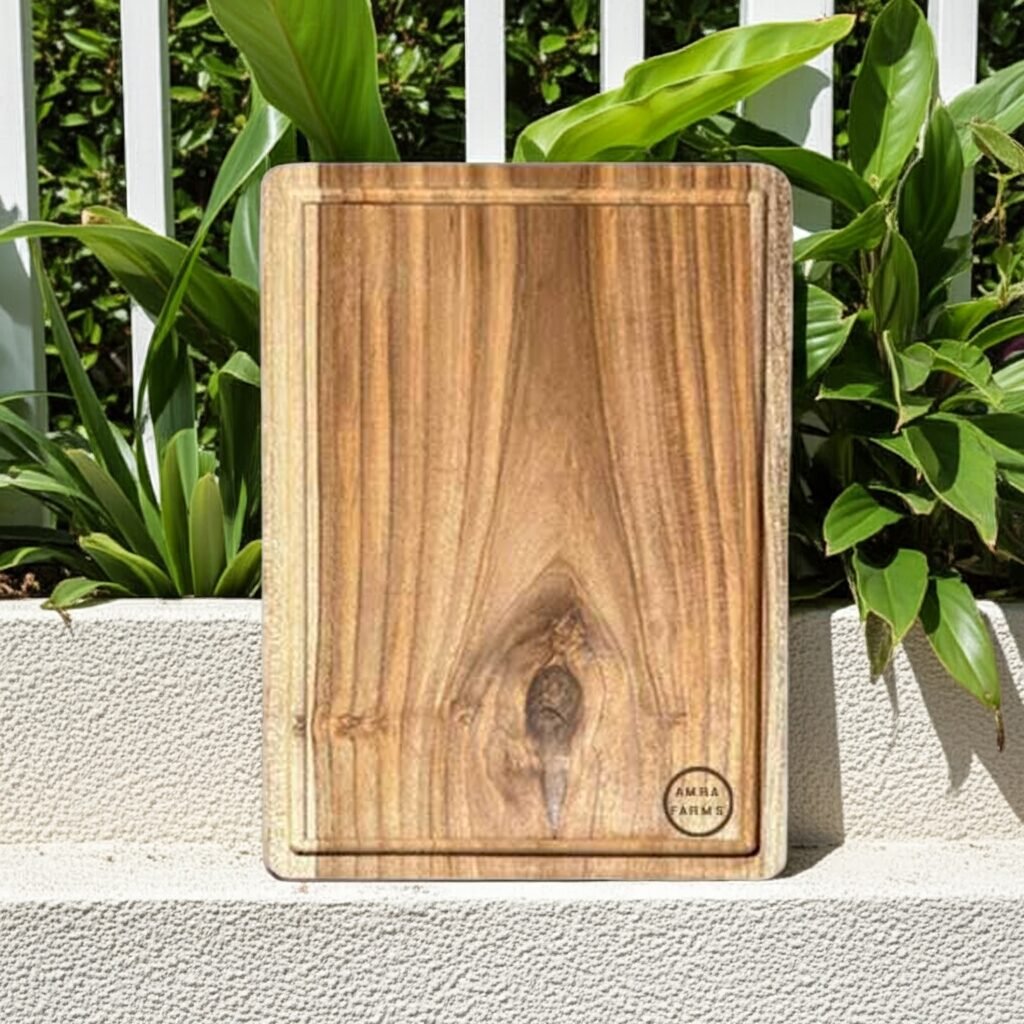

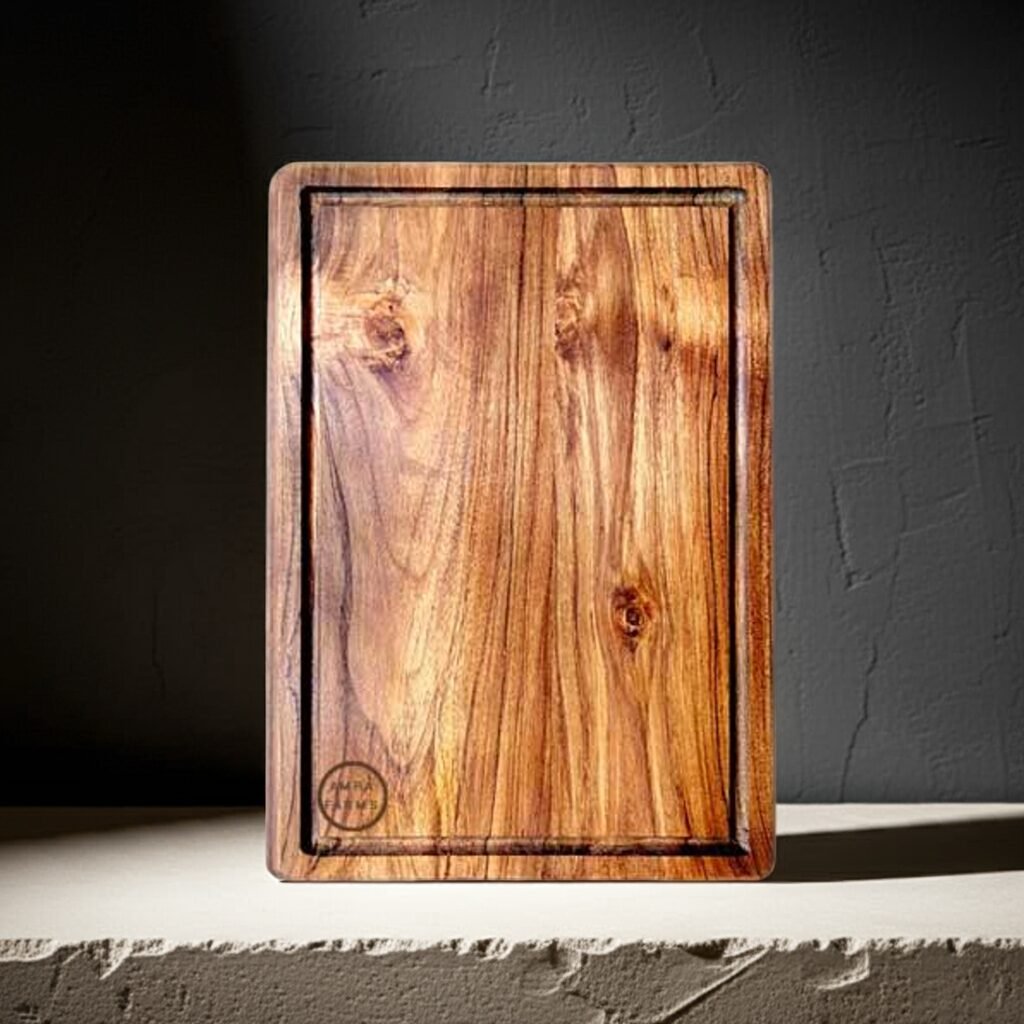
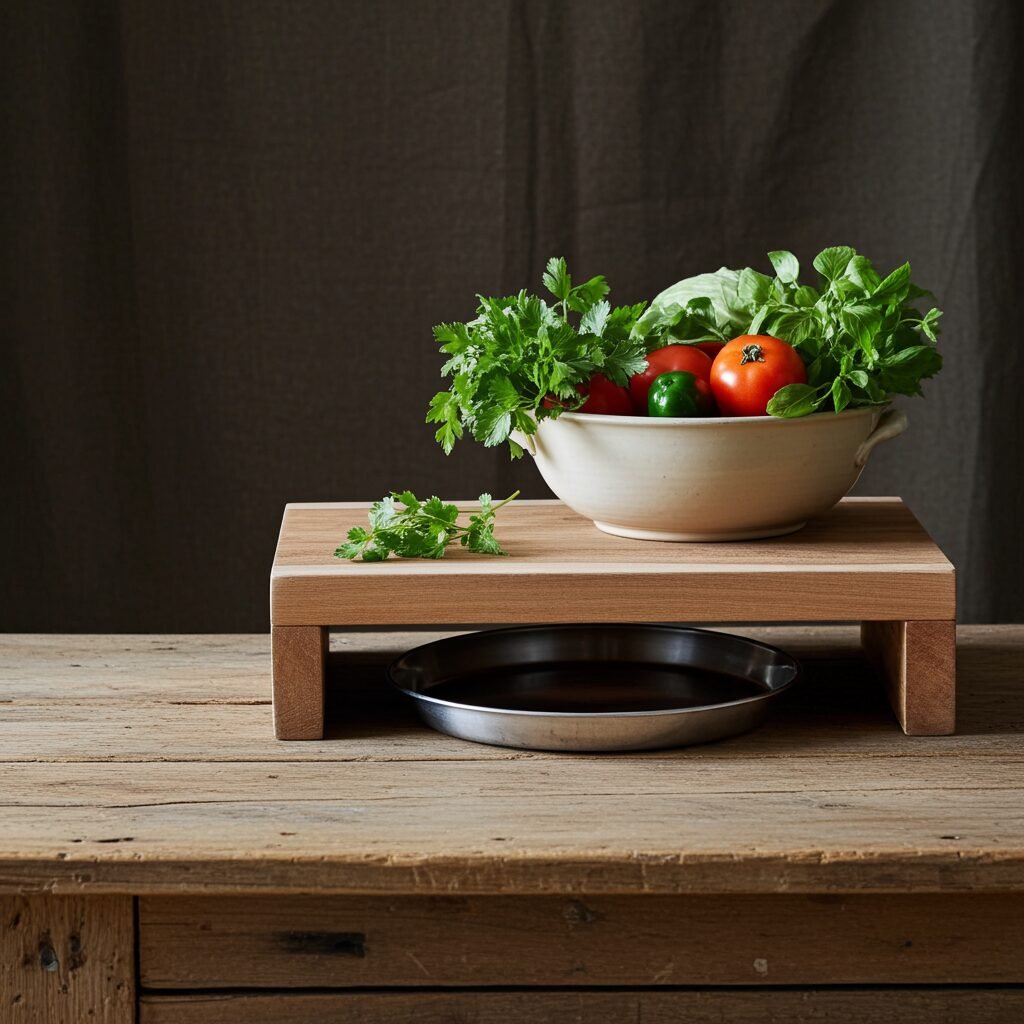
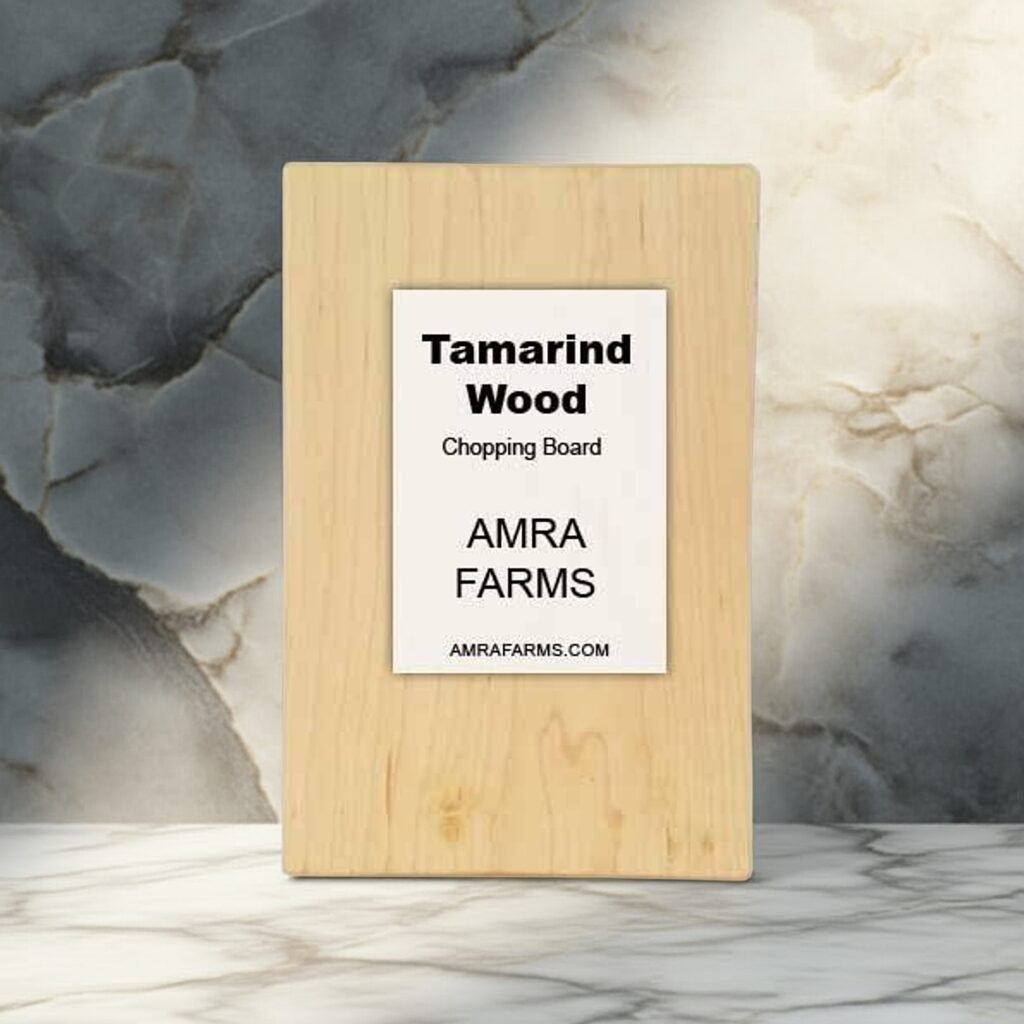

What is neutral pH and why it matters
Let’s get a bit scientific. Do you know the influence of pH levels of a material and its effect on food safety? We don’t talk pH levels when we purchase a cutting board but while we are talking about the health benefits of teak wood cutting board, let’s take the opportunity to understand it. Teak wood is neutral in pH. And it directly contributes to the safety and hygiene of food prep.
What is Natural PH and why it matters in food prep
The pH measures how acidic or alkaline the surface is. A pH of 7 is considered neutral which means it’s neither acidic nor basic. Teak wood is close to the neutral point making it an ideal surface for healthy cooking. The neutrality plays a crucial role in bacterial growth. Acidic or alkaline surfaces also interact with food, altering flavours, smell and promoting microbial activity which causes contamination.
Role of pH in bacteria resistance and odour prevention
High pH has the tendency to promote bacterial survival when connected with moisture and organic matter. Meat juice, vegetable scraps and moisture combined with an acidic surface activates bacterial growth in the cutting surface. A neutral surface helps stabilise the surface and reduce the chances of bacterial growth. High pH levels also have the tendency to retain odours. Plastic boards and soft wood retain moisture and absorb the liquid from food like onion, fish and meat. Teak’s neutral pH combined with the natural oils and the tight grains resist odour in your board.
Why acidic or basic surfaces can affect food safety
Chopping boards made from synthetic material or poorly treated material tend to lean towards acidic or alkaline based on the food you cut and the exposure to cleaning chemicals. They disrupt the natural pH of certain food, encourage microbial imbalance and react with acidic ingredients like citrus. This will compromise the taste and safety of your meal. In contrast, teak remains stable and reliable for a healthy cooking surface and does not interfere with ingredients or your wellbeing.
Staff picks
Top rated products
Amra Farms Live Edge Teak Wood Chopping Board – Handcrafted & Premium Quality (T-101)
Original price was: ₹4,999.00.₹3,749.25Current price is: ₹3,749.25.Amra Farms Elegant Wooden Cheese Board & Serving Board (18 x 13 x .75 inch) : Platter & Tray ,
Original price was: ₹2,999.00.₹1,880.96Current price is: ₹1,880.96.Amra Farms Small Rustic Wooden Cutting Boards With Handle (46 x 17 x 2 cm) : Mango wood
Original price was: ₹999.00.₹749.25Current price is: ₹749.25.Amra Farms Teak Wood Butcher Block : Meat Cutting Wooden Board (40 x 25 x 2 cm)
Original price was: ₹4,999.00.₹3,499.30Current price is: ₹3,499.30.Tamarind Wood Extra Large Single Block Chopping Board
Original price was: ₹5,999.00.₹4,449.25Current price is: ₹4,449.25.
Benefits of Using a Non-Toxic and Chemical-Free Teak Cutting Board
Avoiding plasticisers, resin, and glue in synthetic boards
It’s not the food alone that is of concern to most of us, it’s also how and where the food is prepared. With more heavily processed and synthetic alternatives in the market, the teak wood cutting board made from non-toxic material ensures a kitchen stay free from chemicals. This is a big win for your health and the environment.
Avoiding plasticisers, resin, and glue in synthetic boards
Many chopping boards use industrial adhesives and plasticisers to hold the board together. These synthetic resins leach harmful chemicals over time when exposed to heat, moisture and knife pressure. Toxins like Phthalates, BPA, formaldehyde-based glues and residual chemicals often are carcinogenic and compromise the safety of your meal, especially when preparing organic food or raw meat.
Naturally oiled teak wood: no artificial coatings
Teak wood is rich in oils and resins that require no artificial finish. They are durable and water-resistant. Chemical-free food prep boards made of teak are usually free from toxic glues and are naturally sealed from within. They are resistant to moisture without a synthetic waterproofing agent.
Safe for organic and raw food preparation
A non-toxic cutting board material is not an option but an essential. Preparation of food remains pure and untouched by chemicals on a teak wood cutting board. It’s a hardwood accessory that maintains food safety without interfering with the quality of the ingredients.
Hypoallergenic Nature of Teak Wood Chopping Boards
Teak wood is hypoallergenic naturally. For people with concerns of allergy and for families with allergy sensitivities like skin sensitivities, the kitchen is often a source of irritation. Teak wood is naturally pure and stable and makes a safe chopping surface for people with allergies.
Why allergy-sensitive households prefer teak
Unlike treated wood and synthetic boards, teak comes with built-in preservatives in the form of natural oils eliminating the need for varnish or chemical sealants. Families with asthma and respiratory disease, sensitive skin, eczema can benefit from a teak wood cutting board.
Safer for infants and people with skin sensitivities
For households with young children and infants in particular, every food preparation needs to be safe and pure. Teak, with its non-toxic hypoallergenic surface, is the perfect board to prepare baby food, finger snacks or a meal without worries about severe dietary or skin sensitivity issues. The smooth surface also ensures fewer micro-splinters, less residue transfer compared to other materials.
Reference : https://pubmed.ncbi.nlm.nih.gov/31113021/ , https://www.mdpi.com/2079-6412/13/4/752
Categories
Products
- Buy Wooden Vegetable Cutting Boards Online
- Wooden Kitchen Accessories Tools
- Buy Butcher Block & Meat Cutting Boards Online
- Buy Premium Edge Grain Single Block Wooden Chopping Boards Online
- Buy The Best Teak Wood Chopping Boards Online In India
- Buy Wooden Cutting Boards With Handle For Kitchen
- Mango Wood Chopping Boards
- Tamarind Wood Chopping Boards
- Wooden Platter Boards , Pizza Platters & Charcuterie Boards
Tamarind Wood Cutting Board Teak Wood Cutting board
Recent Posts
- Unique Wooden Chopping Boards with Medicinal Benefits
- Exotic Woods of India and Its Uses
- Best Uses of Teak Wood: Common and Unique Applications That Make It the King of Hardwoods
- What to look for when purchasing a teak wood cutting board and how to identify teak wood
- Wooden chopping boards that naturally resist fungus/mould growth

